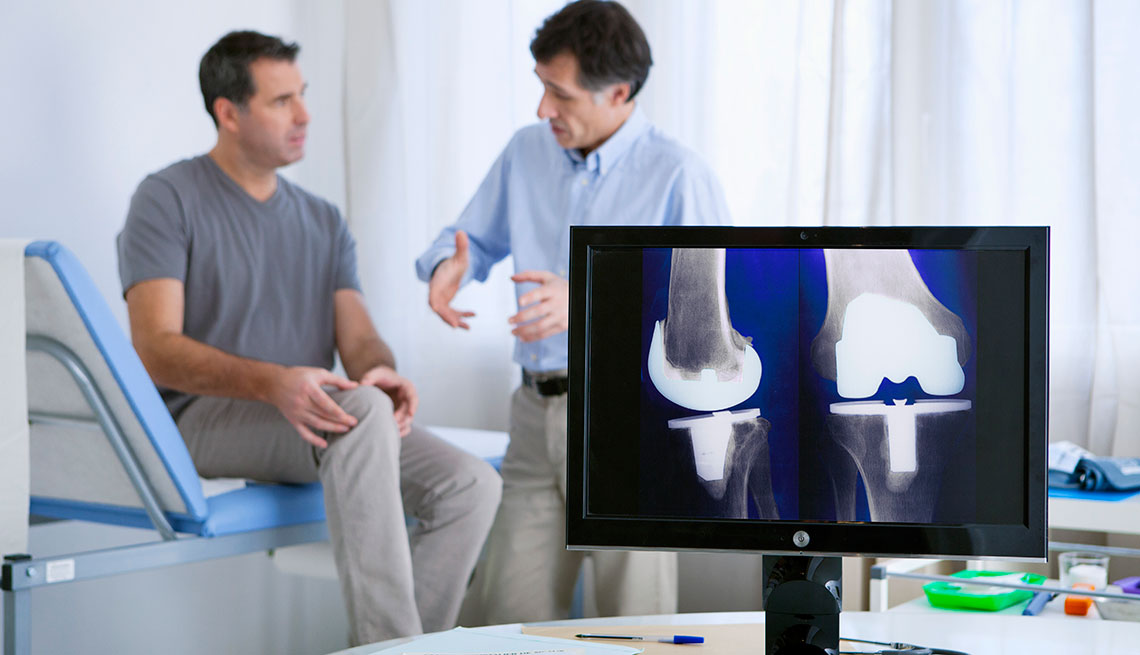AARP Hearing Center
The average age of patients getting knee or hip replacement surgery is dropping, and the volume of such replacements will grow by more than 170 percent by 2030, according to research that sheds new light on the popular procedures.
The research, presented earlier this month at the annual meeting of the American Academy of Orthopaedic Surgeons, indicates that between 2000 and 2014, the mean age of patients for hip replacement surgery decreased in the U.S. from 66.3 years to 64.9 years. The mean age of knee replacement patients declined from 68 years to 65.9 years.
The study also predicted that total hip replacement surgeries will soar by 171 percent by 2030 and total knee replacement surgeries will grow by 189 percent. So-called revision surgeries, in which previous replacements are themselves replaced after they wear out, are expected to rise by 142 percent for hip replacements and 190 percent for knee replacements.
“We will continue to look at new data, as the numbers need to be constantly updated, especially if they are used to make predictions for future health care saving decisions, as the impact can be in the millions of dollars,” Matthew Sloan, M.D., the study’s lead author, said in a statement. “It’s imperative to provide policymakers with high-quality data to inform decisions that will affect patient access to orthopedic care and the financial viability of elective orthopedic procedures.”
Sloan told CNN he believed that the drop in age for joint replacements was largely due to rising obesity rates. But Matthew Hepinstall, M.D., associate director of the Center for Joint Preservation and Reconstruction at Lenox Hill Hospital in New York, told the network that an increase in athletic activity among some adults is also a factor. "We absolutely are seeing more and more people who need this. We're seeing them younger. Some are heavier, and some are more active and had injuries," he said.
The researchers found that people receiving the replacements are overwhelmingly non-Hispanic whites (80-86 percent), although that percentage is decreasing. Women make up the majority of the patients — from 55 percent to 62 percent, depending on the procedure.

































































